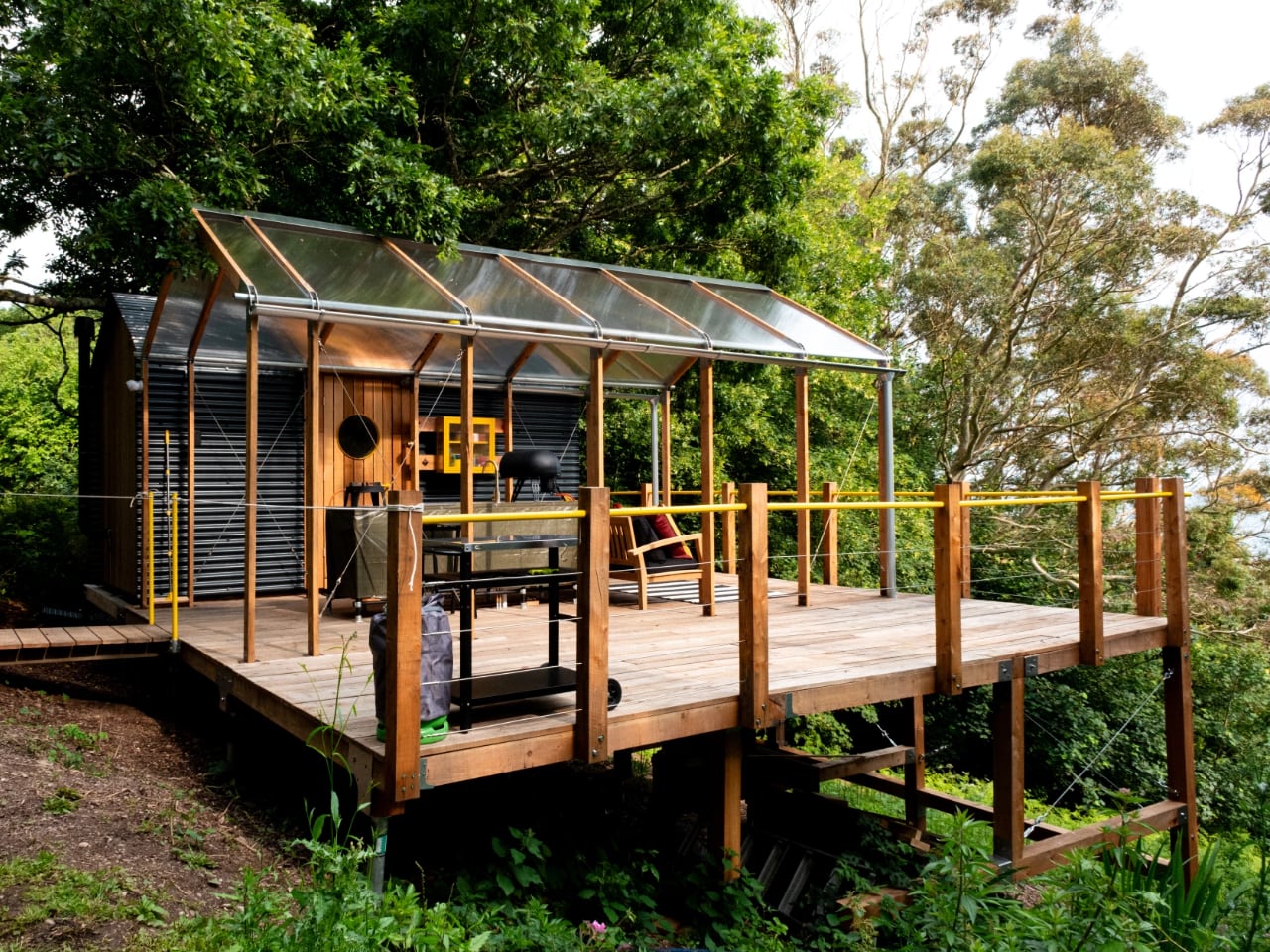The Birdhouse Modular Tiny House by Tree Tents represents a fresh approach to prefab design that borrows from children’s building blocks. This Scandinavian-inspired flatpack system addresses real challenges in modular construction: transport costs, site accessibility, and design flexibility. How does a modular tiny house solve the problems that plague traditional prefab homes? The Birdhouse Modular tackles these issues through its component-based assembly system that ships flat and builds up. Wood and aluminum construction meets practical engineering in this 2025 release from the UK-based company. The system adapts to difficult terrain through its stilted foundation approach. This design philosophy challenges conventional thinking about sustainable modular homes and outdoor living structures.
Designer: Tree Tents
Birdhouse Modular Tiny House Key Features
Modular, expandable system with Lego-like assembly
Wood and aluminum construction for durability
Flatpack delivery worldwide for easy transport
Optional porch and outdoor kitchen for extended living
Stilted foundation for rough terrain installation
Panoramic windows with Scandinavian design aesthetic
Starting at $32,000 for original Birdhouse model
What Makes the Birdhouse Modular Tiny House Different?
The Birdhouse Modular solves a fundamental problem in prefab design: how to ship large structures economically. Each prefab tiny house component fits into standard shipping containers, dramatically reducing transport costs compared to traditional modular homes. The system uses wood and aluminum materials chosen for their strength-to-weight ratio rather than pure aesthetics. Tree Tents engineered the connections to require basic tools, eliminating the need for specialized construction crews.
Outdoor kitchens integrate as separate modules rather than built-in features, allowing owners to customize their layout. The porch system extends living space without requiring foundation work. The modular design means components can be reconfigured or relocated, addressing one of prefab housing’s biggest limitations. Installation on difficult terrain becomes possible through the adjustable stilt system that adapts to slopes and uneven ground.
Each module incorporates panoramic windows that serve both aesthetic and practical purposes by maximizing daylight in compact spaces. The Scandinavian design language emphasizes function over decoration, with clean lines that hide complex engineering. Interior spaces convert between uses through clever furniture design that maximizes square footage efficiency. The system demonstrates how modular construction can move beyond cookie-cutter solutions toward truly flexible architecture.
Tree Tents’ Design Philosophy: Elevation and Modularity
Tree Tents built their reputation on elevated cabins that minimize environmental impact while maximizing views. The company’s approach contrasts sharply with ground-based tiny house designs that require extensive site preparation. Their product ecosystem includes the original Tree Tent suspended structure, the Fuselage all-terrain cabin, and the Airspace canvas system. Each product addresses different use cases while maintaining the elevation principle. This design consistency creates a coherent brand identity in the crowded tiny house market.
The original Birdhouse model costs $32,000 and measures 84 square feet, positioning it in the premium tiny house segment. The modular version expands the addressable market by offering scalability that fixed-size units cannot match. Tree Tents uses made-to-order production to avoid inventory costs while allowing customization. The elevated construction method preserves natural drainage patterns and minimizes site disturbance compared to traditional foundations.
Design Context: How Birdhouse Modular Fits the Prefab Market
The modular housing market has fragmented into distinct segments serving different needs and budgets. Nestron targets the high-tech market with earthquake-resistant units starting around $59,000 that include smart home features. These finished units arrive ready for immediate occupancy but sacrifice customization for convenience. Koto Design offers Scandinavian-inspired prefab cabins that share aesthetic DNA with the Birdhouse Modular but use different construction methods.
Budget-focused manufacturers produce container-based options starting under $20,000 that prioritize affordability over design refinement. These utilitarian approaches serve the housing crisis market but lack the design sophistication that drives premium pricing. IdeaBox positions itself as the “IKEA of prefab houses,” offering extensive customization through standardized components. Dvele focuses on performance features like air filtration and energy efficiency that appeal to health-conscious buyers.
The Glamping Design Connection
Glamping operators drive demand for structures like the Birdhouse Modular because they need Instagram-worthy designs that photograph well. Lancaster Log Cabins serves the rustic market with traditional wood construction that appeals to nostalgia. Norida Pods offers modern minimalist designs that attract urban guests seeking clean, simple experiences. Glitzcamp specializes in luxury domes and safari pods that command premium rates through distinctive aesthetics.
Tree Tents differentiates itself by combining treehouse nostalgia with modular flexibility that allows site-specific customization. Their elevated designs create photogenic moments that guests share on social media, generating organic marketing for glamping operators. The company’s sustainability messaging aligns with environmentally conscious travelers who want luxury experiences without environmental guilt. This combination of visual appeal and eco-credentials helps operators justify higher rates while attracting repeat customers.
Frequently Asked Questions about the Birdhouse Modular Tiny House
Can the Birdhouse Modular be expanded after installation?
Yes, the modular system allows adding rooms, decks, or utility spaces. The component-based design makes expansion straightforward compared to traditional construction.
Is the Birdhouse Modular suitable for off-grid living?
Tree Tents offers solar power options and composting toilet systems for remote locations. The elevated cabin design works well in areas without traditional utilities.
How long does it take to assemble a Birdhouse Modular?
The flatpack delivery system enables assembly with basic tools. Most installations complete within days rather than the weeks required for traditional modular homes.
For more coverage of modular tiny house innovations and glamping design trends, explore our archive of prefab architecture and sustainable outdoor living stories.
The post Birdhouse Modular Tiny House: Tree Tents’ Flatpack, Scandinavian-Inspired Glamping Cabin first appeared on Yanko Design.

